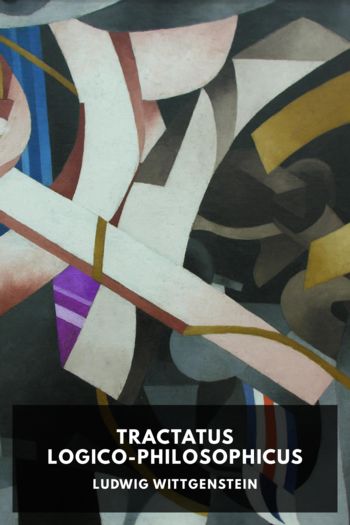Monty Python and Philosophy by Gary Hardcastle (best novels for beginners .TXT) 📗

- Author: Gary Hardcastle
Book online «Monty Python and Philosophy by Gary Hardcastle (best novels for beginners .TXT) 📗». Author Gary Hardcastle
Trolley Case 1: You are working in a coalmine with a Y-shaped shaft. The long part of the shaft leads to the surface. The two arms of the Y are the shafts from which the coal is being mined. The coal is taken out of the mine by a trolley, which is pulled up by a chain. Unfortunately, the chain breaks, and the trolley runs out of control down the main shaft. The points at the junction currently direct the trolley to the righthand shaft, where it will kill five miners working there. However, you can switch the trolley to the left-hand shaft, where it will only kill one miner. (All miners are equally loved by their families, equally intelligent, and so on.) What is the moral course of action for you to take?
When faced with this example most people would say that they would switch the trolley, justifying their decision by saying that switching the trolley would cause the least amount of suffering. In response to this a philosopher might then offer the following example:
Trolley Case 2: You are working in a coalmine with a single shaft that slopes downward. Trolleys run up and down this shaft taking coal out of the mine. The chain pulling the trolley breaks, and it runs out of control towards five miners working at the bottom of the shaft. You’re standing by the side of the trolley track. You’re too small to stop it by jumping in front of it, but a coworker standing next to you is very large, and if you push him in front of the trolley he would stop it from killing the five miners. Unfortunately, in doing so he would be killed. What is the moral course of action for you to take?
In this case most people would object to throwing another person in front of the trolley to save the five miners. But at first sight the decision not to throw the coworker in front of the runaway trolley looks odd, since in Trolley Case 1 most people would say that you should sacrifice one person to save five. After all, it seems that the only difference between Trolley Case 1 and Trolley Case 2 is that in the first case one would be throwing a trolley at a person to save five miners, whereas in the second one would be throwing a person at a trolley to save five miners. And it doesn’t seem that what is thrown through the air to save the five miners should make so much moral difference, since in both cases your chosen actions would save five persons through sacrificing one.
Now, you might say that you will never be faced with the decision of whether to sacrifice one person to save five, and so rather than being useful in defending philosophers from the charge that their examples are impractical and irrelevant, the above discussion really confirms it. But to argue in this way would be to miss the point of the above two Trolley Cases, which is to help people clarify their thinking about what makes an action morally right. To be sure, you are about as likely to encounter a runaway mine trolley as you are likely to be hit on the head by a rubber chicken wielded by a passing knight. But this doesn’t detract from the fact that through using such examples you can assess whether your original view of what makes an action right is correct or not. Like the Pythons’ thinking about the thinking of their audiences’ thinking when writing the sketch “Complaints,” then, your thinking about the Trolley Cases will lead you to think about your own thinking about what makes an action right.
For example, if you started off thinking that an act was right if it minimized pain (a version of the ethical theory known as “utilitarianism”) you might have to revise your view when faced with Trolley Case 2. You might need to abandon this view altogether and try to find another principle for determining what makes an act right, or else you might decide to try to revise your original view so that you can accommodate your intuition that you shouldn’t push people in front of trolleys, even if doing so will save more lives. In the latter case you might come to endorse a version of “rule utilitarianism,” holding that an act is right if it conforms to a general rule that, when followed, would minimize pain. Thus, since the rule “don’t push people under trolleys” is likely to minimize pain you could modify your original utilitarian position in this way to accommodate the second trolley case. Like the Pythons finding humor in being both performers and audience to their own performance, in constructing their examples philosophers are encouraging people both to think about a particular issue (such as “What makes an act right?”) and also to be the audience to their own thinking, and think about their thinking on this issue.
Madmen, Blancmanges, Violinists, and Abortion
The point of the above discussion is not, of course, to show either that people should abandon a utilitarian approach to ethics or that they should become rule utilitarians. Rather, it’s to show that just as the Pythons derived humor from their





Comments (0)